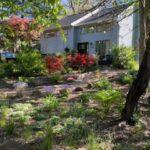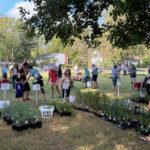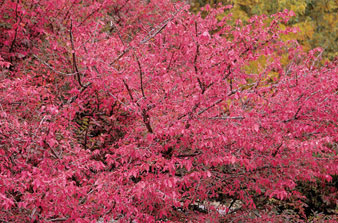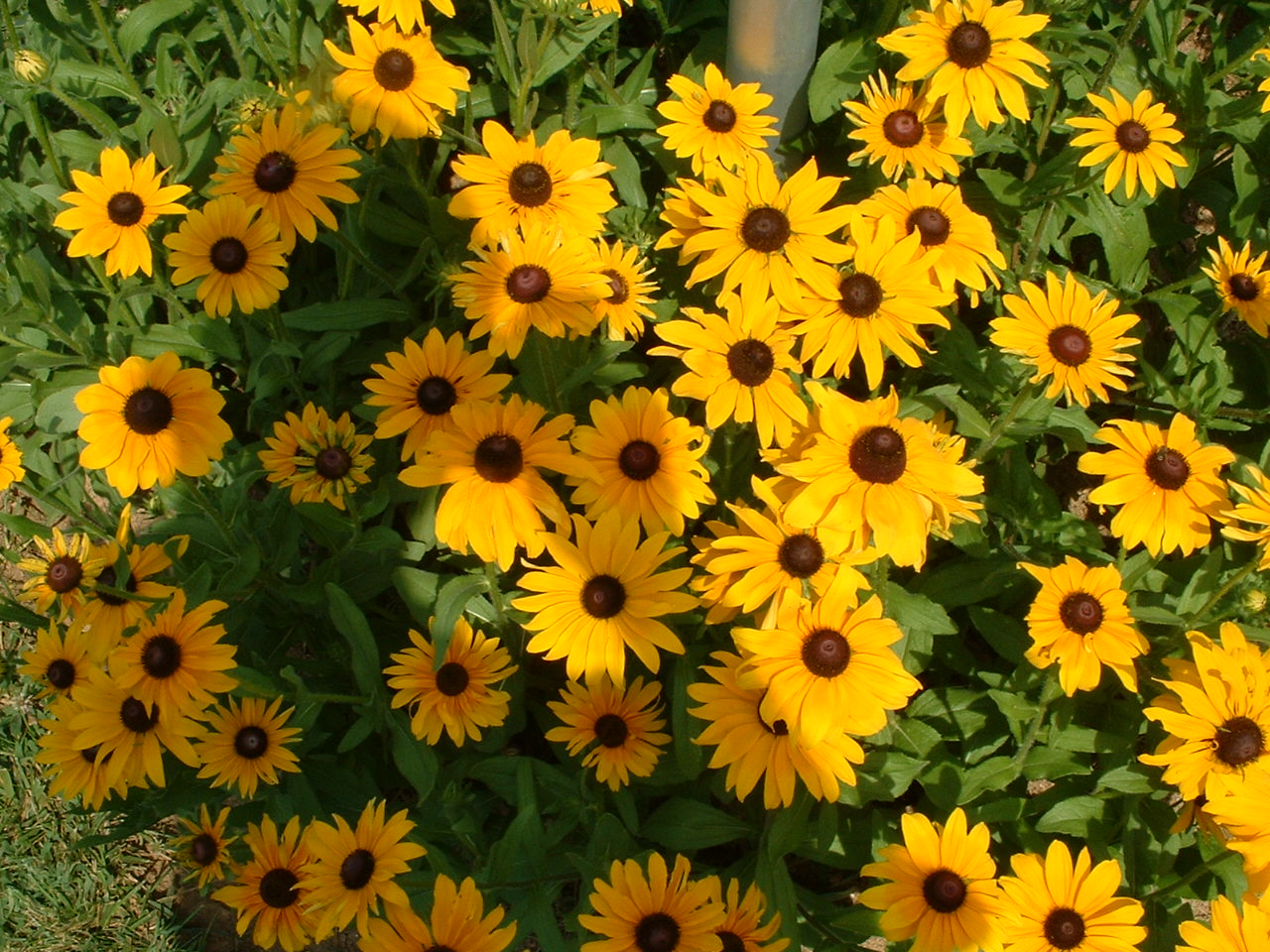
Habitat Hero Summer 2024 Winner
August 5, 2024
Wrapping Up a Successful Year
October 18, 2024By Stacey Wildberger
If you spend anytime on social media for the Cape you have probable seen my posts calling to come out and help us with Weed Warriors. Maybe you are wondering what is it or why are we doing it? We have been focusing on several areas in the community to remove invasive species and plant natives. Our main area of focus has been Serene Ravine, off Lake Claire Dr, Little Magothy Beach Park/Woodland area and the area around the Deep Creek Pier parking area.
Characteristics of Invasive Species (not all exotics are invasive)
- Impacts the ecology and/or economy to the area it was introduced
- Outcompetes and overwhelms the native flora
- Grows and reproduces fast
- Lack of natural predators to slow their growth (nothing is eating these plants!)
As I mentioned we are combating many different invasive species throughout our community but why do we care and how did they get there? And finally how can you help?
Why Remove Invasive Species?
They outcompete native plants that native wildlife depends on for survival. These have developed specific relationships over thousands of years of coevolution. Some species are so dependent on specific plants that they can only use that plant to lay eggs on- most think monarch and milkweed but there are thousands more with those specific needs
Invasive plants spread and create monocultures, leading to loss of biodiversity. I can attest to the lack of diversity in the space we have cleared of burning bush at Little Magothy Beach. There was nothing but burning bush (picture above) as far as the eye could see. Tucked amongst them were some native sassafras just waiting for their chance to thrive. We have added some native trees and shrubs in hopes of creating a much more robust ecosystem!
Often the damage caused by invasive species cause irreversible damage to the environment, reduce recreational space and affect human health. There is also a significant economic factor—the time and expense of removing invasive species from a space.
How do invasive species come into an area?
Invasive species are often sold at our local nurseries. Homeowners believe them to be safe to plant or not harmful because they are so commonly seen on landscapes and sold to us by landscapers and the nursery trade. We plant them on our landscapes and they spread through seed dispersal, wind, and root systems, and not just in our own property but out into common areas or to the wild.
They can come from many unintentional means by humans as well through travel and trade or the soles of our shoes after walking through an infested area.
What can you do to help stop invasive species?
Buy and plant native plants. Create demand for native plants by asking your local big-box stores to carry more natives. Shop at local native plant nurseries and pop-up sales (like ours in the fall!)
Stop buying and planting invasive species. Just because you don’t see it spreading it in your landscape doesn’t mean it hasn’t spread to other areas. The seeds and roots can travel great distances and create havoc “somewhere out there”. That non-native invasive Nandina the nursey tells you is a “sterile” variety, it will eventually revert to producing seed. The invasive Bradford pear that we were told was sterile is now along every corridor on the east coast.
Report invasive species to your local DNR office and request support to remove them.
Check and clean your shoes and your pet’s paws and fur after you have been on a hike though the wilderness. Your seeds and their fur can transfer unwanted species to other areas.
Finally, volunteer with a local group to fight invasives that are already here causing issues, reducing biodiversity, outcompeting natives to create monocultures and suppressing the native plants our local fauna need for survival. Even though Weed Warriors officially ended at the end of October due to the lack of light in the evenings we will plan some weekend invasive removals throughout the winter. English Ivy is easier to spot when all the other plants have died back. Please contact me at [email protected] to get involved. It is rewarding, satisfying work to see those bags of invasive plants stacked up and the cleared spaces left behind to fill in with native plants.




